
Investigating Quadratics in the xb Plane
by
Lizzy Shaughnessy
Assignment 3
In this write up we will investigate the quadratic function ![]() and the graphs in the xb plane.
and the graphs in the xb plane.

Investigating Quadratics in the xb Plane
by
Lizzy Shaughnessy
Assignment 3
In this write up we will investigate the quadratic function ![]() and the graphs in the xb plane.
and the graphs in the xb plane.
To start, let's look at the graph of the function when a = c = 1 and b = -3, -2, -1, 0, 1, 2, 3.
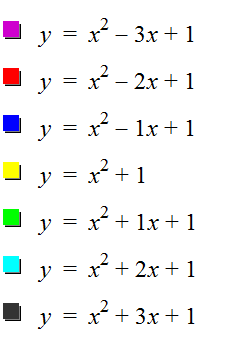
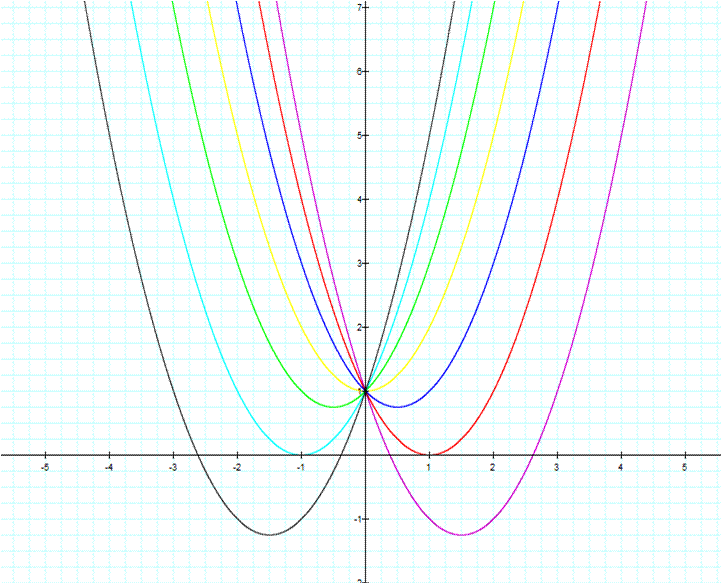
Some observations about these functions:
Now we will look at the vertex of these parabolas.
To find the vertices of these functions, we will start by completing the square to get
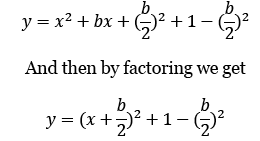
As we discussed in Assignment 2, these is the vertex form of a quadratic. So for the vertex (d,f)

So for all the parabolas we graphed, we can calculate the vertex using the above equations.
We can also investigate the roots of these functions in the xb plane. The function ![]() in the xb plane looks like this:
in the xb plane looks like this:
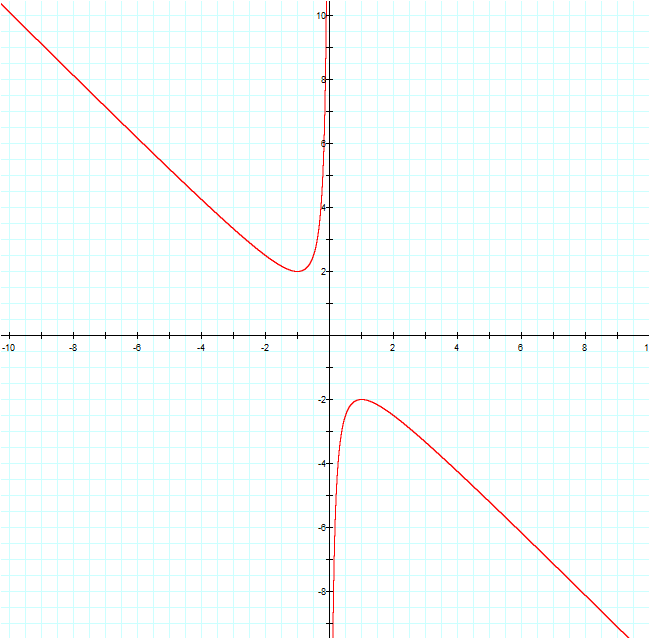
(Note: to graph this in Graphing Calculator 4.0 or similar software, enter ![]() )
)
If we add horizontal lines to this graph at the same values of b we used at the beginning of the assignment, we will be able to see where the function ![]() has roots. We will have roots where the horizontal lines cross the function
has roots. We will have roots where the horizontal lines cross the function ![]() .
.
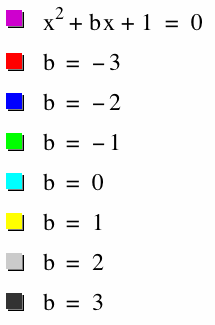
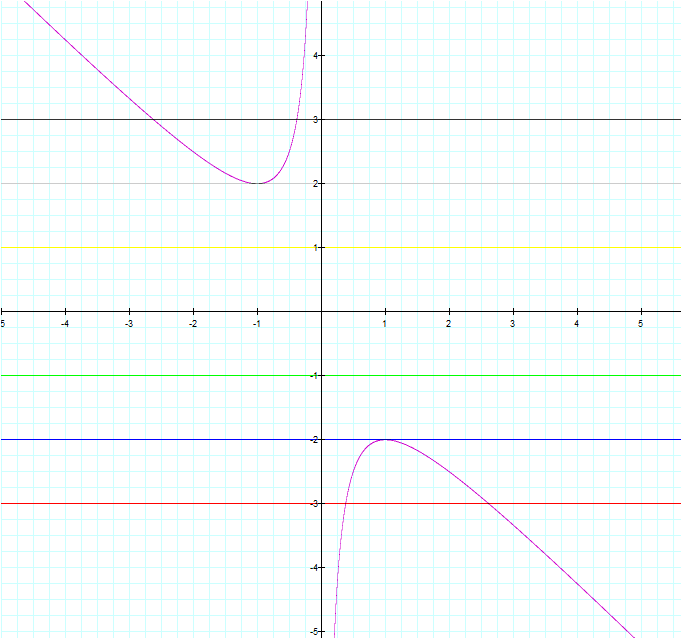
The above graph shows that the function ![]() crosses the b = -3 and b = 3 line twice, meaning the function has two roots for these values of b. The lines b = -2 and b = 2 touch the function at exactly one point meaning there is one real root where that inersection occurs. Finally, the lines b = -1, b = 0, and b = 1 do no cross the function at all, indicating that the function has not real roots for these values of b.
crosses the b = -3 and b = 3 line twice, meaning the function has two roots for these values of b. The lines b = -2 and b = 2 touch the function at exactly one point meaning there is one real root where that inersection occurs. Finally, the lines b = -1, b = 0, and b = 1 do no cross the function at all, indicating that the function has not real roots for these values of b.
All of this information we have found about the roots of these functions verifies the information we found at the beginning of the assignment!
What if we changed the value of c to be -1 instead of 1? how would this change the roots of the function?
First, lets look at graph of the function ![]() .
.
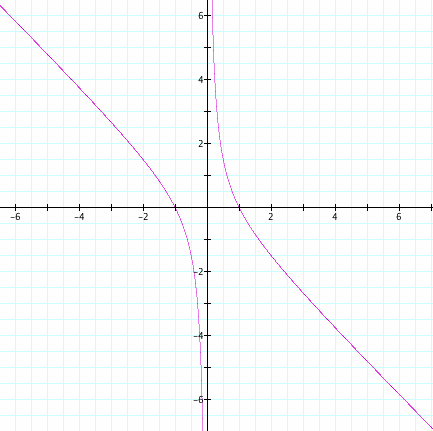
Now if we add the same horizontal lines we used before we get the following graph:
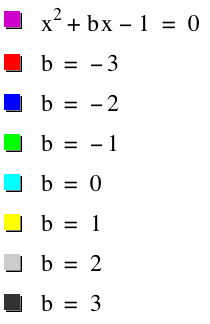
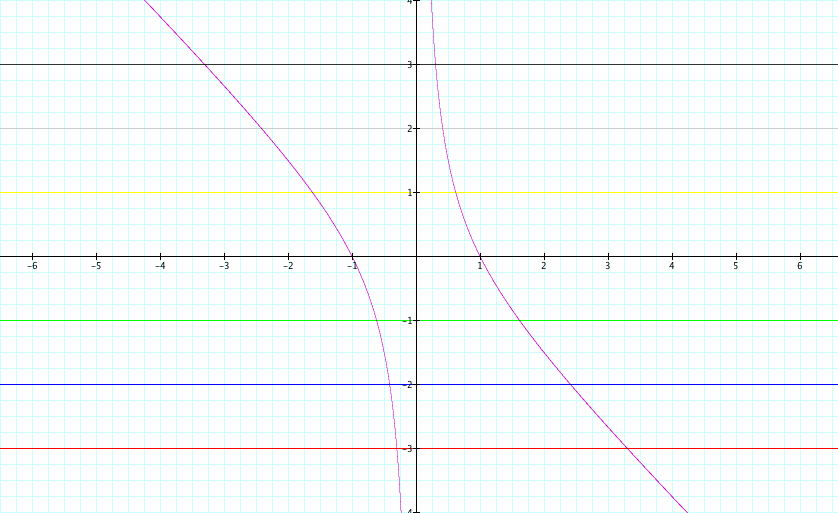
So the quadratic ![]() will always have two real roots because, as seen in the graph above, no matter what values we choose for b, the line will always intersect the function at two points. We can also verify this by graphing the traditional quadratics we started the assignment with but using c = -1 instead of 1.
will always have two real roots because, as seen in the graph above, no matter what values we choose for b, the line will always intersect the function at two points. We can also verify this by graphing the traditional quadratics we started the assignment with but using c = -1 instead of 1.
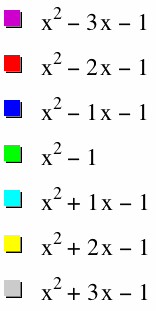
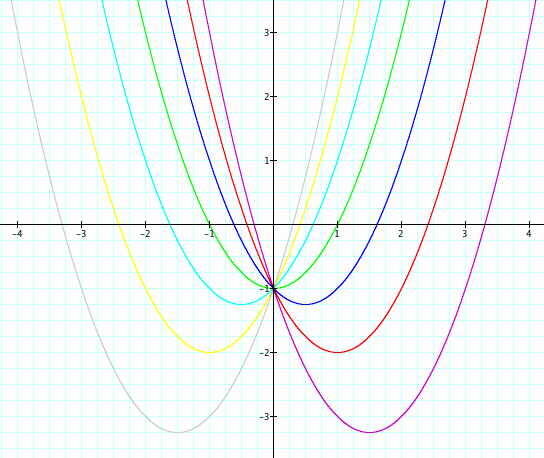
We can see that each of the parabolas cross the x-axis at two points, indicating they all have two real functions. So if c = -1 and a = 1, there will be two real roots for the function, regardless of the value of b.